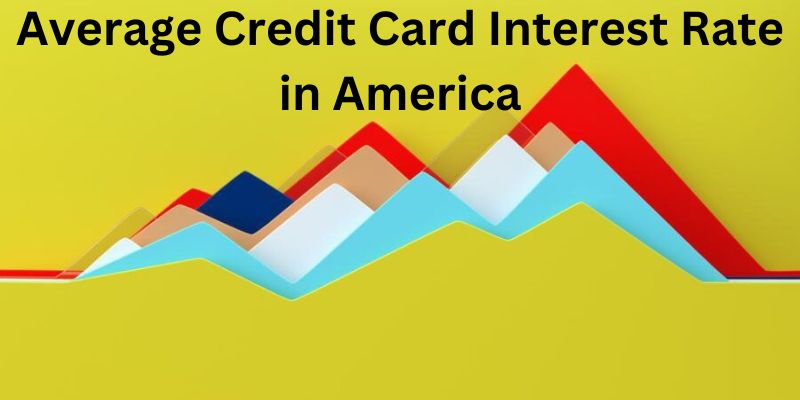Decoding the Mystery: Why are Credit Card APRs Sky-High?
Susan Kelly
Dec 18, 2023
Have you ever tried to decipher why the APR for your credit card is so high? Do terms like “annual percentage rate” leave you scratching your head and wishing for more information? If so, then this blog post is perfect for you! We will be exploring what an APR is, how it affects risks and profit margins of lenders, and which factors cause some APRs to skyrocket. This knowledge can provide an essential understanding into exactly why those interest rates are set as they are — unlocking a mystery that could save customers hundreds of dollars in unnecessary fees. So join us on our journey to discover the secrets behind high APRs!
Basics of Credit Card APR:

Credit cards are a reliable and convenient way to make purchases. However, as with most loans, there's a catch. One of the most significant features of any credit card is its annual percentage rate, or APR. Put simply, this is the interest rate that'll be charged on your account balance if you don't pay it off in full each month. So if you're carrying a balance from one month to the next, the APR will directly impact how much you owe.
Understanding the basics of credit card APR is crucial to ensuring that you don't accrue unwieldy debt and harm your credit score. Don't worry; grasping it is not as complex as it might seem. With a bit of knowledge and some smart practices, you can strike a balance between taking advantage of your card's benefits and staying on top of your finances.
Analyzing the Role of Risk in Credit Card APR:
In the world of credit cards, one important factor to consider is the annual percentage rate (APR) charged for any outstanding balance at the end of each billing cycle. This rate can be influenced by various risk factors, such as the borrower's credit score, credit history, and outstanding debt. Analyzing the impact of these risk factors on APR can provide valuable insight into how credit card companies calculate the cost of borrowing and what borrowers can do to reduce their interest rates. By understanding the role of risk in credit card APR, consumers can make more informed decisions and save money in the long run.
Examining Banks’ Decision-Making Process in Setting APRs:
Banks play a crucial role in our financial lives and often hold the power to dictate interest rates on personal loans, credit cards, and mortgages. As we apply for these loans, we may wonder how lenders determine the Annual Percentage Rates (APRs) we'll be charged. Examining banks' decision-making process in setting APRs can provide insights into how these rates are established. Factors such as creditworthiness, inflation, market competition, and economic indicators all play into the APR equation. By understanding these components, we can better prepare ourselves for loan applications and be advocates for our financial wellbeing.
Unveiling the Cost of Borrowing for Card Holders:
When it comes to borrowing money, credit cards are a popular choice for many consumers. However, with that convenience comes a cost. It's important for cardholders to understand the true cost of borrowing on their credit cards, which goes beyond just the interest rates. Factors such as annual fees, balance transfer fees, and late payment fees can quickly add up and significantly impact your overall cost of borrowing.
It's easy to get caught up in the convenience of credit cards, but it's crucial to do your research and understand all of the associated costs before making any financial decisions. By taking the time to understand and weigh the costs, you can make informed decisions that will help you avoid any unnecessary financial burdens in the long run.
Investigating How Competing Credit Cards Impacts Average APR Rates:

Credit cards have become an essential financial tool for millions of people worldwide. However, not all credit cards are created equal. The annual percentage rate can significantly impact how much you pay in interest on credit card purchases. That's why investigating how competing credit cards impact average APR rates is crucial.
Understanding the High Cost of Cash Advances and Balance Transfers:
Cash advances and balance transfers can seem like a quick solution to financial troubles, but their high cost can lead to even further financial strain. These measures often come with steep fees and high interest rates, making them far from the ideal solution for managing debt. Before deciding to take out a cash advance or transfer a balance, it is crucial to fully understand the implications and potential consequences of these transactions. While they may offer short-term relief, their long-term impact on your financial stability must be considered. By taking the time to research and explore alternative options, you can avoid falling into a cycle of debt that can be difficult to escape.
Conclusion:
Credit card APR is an important yet often complex topic - one that is critical to understand, especially for those looking to apply for a credit card or manage their existing debt. By understanding the basics of what goes into APR calculations, risk factors associated with lending, and the rationale behind how banks choose APRs, consumers can better evaluate the costs associated with their cards. Additionally, as competition between card companies increases and average APR rates become lower due to incentives, consumers are able to benefit from more favorable terms and costs. Nevertheless, consideration should be taken when using cash advances and balance transfers due to their high price points.
FAQs:
Q: How do banks decide what APRs to offer?
A: Banks take into account a variety of factors when deciding what APRs to offer, such as creditworthiness, inflation rates, market competition, and economic indicators. By understanding these components, you can better prepare yourself for loan applications and be an advocate for your financial wellbeing.
Q: What is the cost of using cash advances and balance transfers?
A: Cash advances and balance transfers come with steep fees and high interest rates, making them far from the ideal solution for managing debt. Before deciding to take out a cash advance or transfer a balance, it is important to understand the implications and potential consequences of these transactions. Taking the time to research alternative options can help you avoid a cycle of debt.







